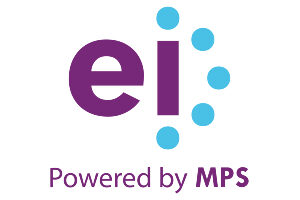How much time do you spend creating actionable objectives? Or, do you omit them altogether? After all, who reads them anyway? Objectives occupy a small space on the page, but they are the most important part of your content development process. Don’t avoid writing actionable objectives. Take your time writing them, give them a focus and a purpose, and the content will follow.
As a content creator, you develop training content with the goal of enhancing the learner’s knowledge or skills. During the content creation process, you write objectives that communicate what the learner should be able to do upon completing the training. You may position these objectives at the top of the page in the training document or eLearning module. The facilitator may even read them out loud during the training. But who are these objectives for and why are they important?
Objectives drive the curriculum. They direct your topics, influence the test questions, help measure the learner’s progress and they are helpful when you update materials and courses. View the content you create through the lens of actionable objectives.
Actionable objectives begin with an action verb that describes what the learner should be able to “do” after completing the training. It is a behavior or a task that can be observed and measured. When creating these actionable objectives, avoid using verbs like, “understand,” “know,” “learn,” or “have.” They cannot be observed or measured. Instead, use words like, “recall,” “describe,” “explain,” or “select.”
This approach can be traced back to a framework called Bloom’s Taxonomy, which classifies learning objectives into a hierarchy of complexity. This framework has been applied in educational settings for decades. While it is most widely used in K-12 settings, it can be applied in the workplace for training adults. Bloom’s is a great resource for objective-friendly action verbs.
Don’t know where to begin? Start with an outline of the main topics your training will cover, then add subtopics. Here’s an example of a management training module that is broken down into sessions (main topics) and lessons (subtopics):
Management 201: Know Your Department
Session I: Department Manager Responsibilities
Lesson 1: Employee Relations and Conflict Resolution
Lesson 2: Performance Reviews, Discipline, and Documentation
Session II: Roles in Your Department
Lesson 1: Job Descriptions and Pay Grades
Lesson 2: Pay, Incentives, and Documentation
After you have created the outline, determine what the learner needs to be able to do once they have completed the training. “Do” implies an action, and this is how you can begin establishing the actionable objectives for each subtopic. Review the chart below to see examples of non-actionable objectives and actionable objectives. We will use the Session I, Lesson 2 subtopic from the management example:
Performance Reviews, Discipline and Documentation
| Non-Actionable Objectives | Actionable Objectives |
| Know how to complete a performance review. | Follow the procedure and internal guidelines to complete performance reviews by the due date. |
| Learn how to properly discipline staff when errors or problems occur. | Write warnings and implement disciplinary action appropriately based on internal discipline guidelines and procedures. |
| Understand the importance of documentation. | Record and document observations and interactions with employees in your department. Analyze and evaluate these records to coach and communicate with your employees. |
In the non-actionable objectives column, the objectives are vague and successful performance would be difficult or impossible to measure. It would also be easy to lose focus and write unnecessary content. However, in the actionable objectives column, you have a guide for the content you will create. Your content will have a purpose and you will easily measure performance against these objectives. The learner also knows what to expect from the training and what they should be able to do once the training is completed. Notice that in the first objective, I could remove “Know how to” to create an actionable objective, “Complete a performance review.” While this is an actionable objective, it is still not detailed or clear enough to measure the outcome. When writing objectives, keep them clear and short (no more than 1-2 sentences) with just enough detail to inform the learner and the content and to create a measurable outcome.
By taking the time to create actionable objectives, you will construct training content that is clear, succinct and focused with outcomes that are measurable and observable. When you get the objectives right, you will see an improvement in your process, structure and content.







